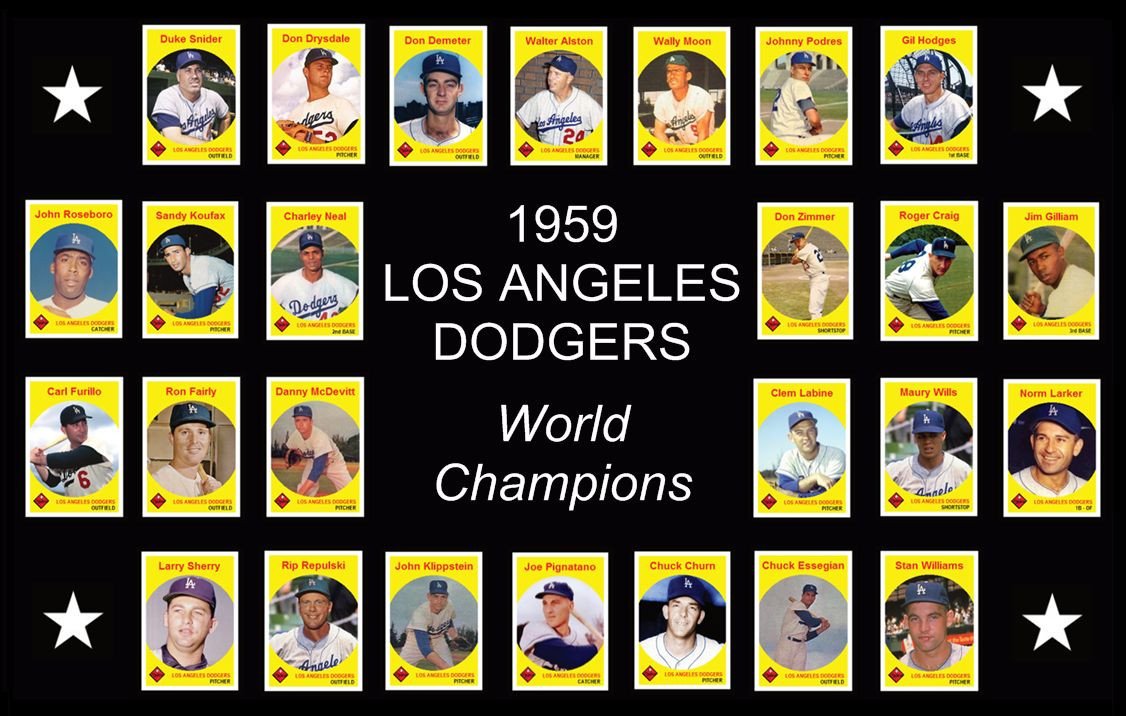
The Dodgers joined the National League in 1890. They won the pennant that year. There was no World Series as we know it back then. The team was the pride of the borough of Brooklyn back then. It would be 65 years before they would claim the World Series. The reached their first one in 1916 and faced the Boston Red Sox of Babe Ruth. In 1920 the opponent was the Cleveland Indians. They lost to Boston in five games and Cleveland beat them in seven. They were known as the Robins then because of their manager, Wilbert Robinson. 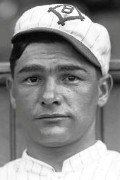
They would not return to the series for 21 years. They were not very good during the 20’s and 30’s. They did have some very good players, Zack Wheat, Nap Rucker, Dazzy Vance, Brickyard Kennedy, and Jeff Pfeffer. Babe Herman set a Dodger record in 1930 that has never been beat or equaled. He hit .393, the highest BA in a single season by any Dodger in their history. They were in those days more known for their bad play than anything else. Thus, the nickname, the Daffiness Boys.
The forties would be different. With new ownership and a solid baseball man running the front office, Branch Rickey, the team began to win. They also made some astute trades and started a farm system that would produce good players for years. Rickey literally changed the franchises future. He had some help with a tough GM running the team, Larry McPhail. McPhail made some astute trades bringing guys like Pee Wee Reese, Dixie Walker, and Dolph Camilli to the team. 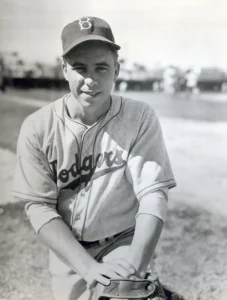
Reese was with the Red Sox system and came to Brooklyn in July of 1939 for 35,000 dollars and three players. None of them ever played for Boston. Reese was a Dodger, and their Captain for 18 seasons. Walker was picked up off of waivers from the Tigers in July of 1939. He was known as the Peeples Cherce in Brooklyn. Camilli came to Brooklyn in a trade with the Phillies in March of 1938. They gave up 45,000 dollars and OF Eddie Morgan. Morgan never played a game in Philadelphia. Camilli was the NL MVP in 1941.
Brooklyn won the pennant in 41 and then played the New York Yankees in their first World Series meeting. They would lose the series 4 games to 1 with the first of many seminal moments coming in game 4 when Mickey Owens missed catching the third strike to Tommy Henrich. Opening the floodgates for the Yankees to score 4 runs and win the game. WWII started that December, and many stars left to serve in the armed forces. 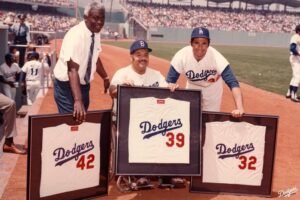
In 1946, Rickey took a huge risk and decided to break baseball’s color line. He sighed Jackie Robinson. Robinson was a star athlete at UCLA and had been in the Army. He had played just 34 games for the Kansas City Monarchs in the Negro National League. He went to Montreal, the Dodgers AAA team for the 1946 season. There was a lot of tension that spring since the Dodgers were training in Daytona Beach. Rickey had Montreal right there with the Dodgers. His hope was that the players would see how good Robinson was and then would demand the Dodgers have him on their team.
This was the segregated South of the 40’s. Many locals were not happy at all about a Negro playing ball with whites. Jackie was housed with a black family and not with the team. There were run ins with the police, but they managed to get through spring training without any incidents. Robinson had a good year at Montreal, but in 1947, Rickey had the Dodgers train in Havana, Cuba. Robinson made a position switch because the Dodgers need was at first base. When the Dodgers ended camp and went North, Robinson was signed to a major league contract.
There was a player revolt of sorts. A petition was circulated by several players who were Southerners. Manager Leo Durocher nipped it in the bud fairly early, and Rickey would end up trading most of the ringleaders, including Dixie Walker. One notable Southerner did not sign the petition, Pee Wee Reese. What followed changed baseball forever. Robbie would be followed by many great players. By the 1948 season, the Dodgers would have three Black stars on their team, Robinson, Newcombe and Roy Campanella.
From 47-54 the Dodgers never finished lower than 3rd place in the 8-team National League. They won 4 pennants and lost 4 World Series. Robinson was the first ever Rookie of the Year. He won the MVP in 1950 when Brooklyn lost the pennant on the last day of the season to the Philadelphia Whiz Kids. Three other black players would win the ROY, Newcombe in 48, Joe Black in 1952, and Jim “Junior” Gilliam in 1953.
The Boys of Summer as they were later dubbed by Roger Kahn in his book, faced the Yankees in all four of those lost series. In 1955 they would finally get some payback. Brooklyn would finally get to celebrate being the Champions of baseball. It only took 65 years. Two years later, owner Walter O’Malley would break their hearts and move the team west to Los Angeles. There the ultimate prize in baseball would come a lot sooner than anyone could have wished for.
1955 World Series
The Brooklyn Dodgers came out of the chute firing on all cylinders in 1955. They won their first 10 games, and after 24 they were 22-2 and in first place by 9.5 games. They cruised to the pennant finishing with a 13.5 game cushion. The offense was led by MVP Roy Campanella, who hit .318/32/107, and Duke Snider, .309/42/136. His 136 RBIs led the NL. He also led in runs scored with 126. Carl Furillo hit .314 with 26 homers, and Gil Hodges added 27 more. As a team they hit .271/201/800. In a striking contrast to today’s game, not one single player struck out more than 91 times. Only Hodges, 91, and Snider, 87 were over 80.
There would be some controversy after the season about Campy’s MVP award as Snider and he got the same number of first place votes. The pitching staff was led by Newcombe’s 20 wins. Labine 13, Erskine 11, and Loes 10, were the only pitchers in double digits. Labine added 11 saves to his resume, 1 behind team leader, Ed Roebuck. The team finished with a 3.68 ERA. They played the New York Yankees again who returned to the Series after being dethroned in 54 by the Cleveland Indians.
On paper, the offensive stats favored Brooklyn. They had outhomered and outscored the Yankees. The pitching though favored the Yankees whose team ERA was 3.08, and their staff had given up just 108 homers compared to 168 by the Dodger staff. The series started in Yankee Stadium on September 28th. Whitey Ford faced Newcombe. Newcombe went 5.2 innings allowing all 6 Yankee runs, with the Yanks blasting 3 homers. Elston Howard hit one, and Joe Collins hit 2. Brooklyn got a pair of homers from Furillo and Snider. The Dodgers were down 6-3 in the top of the 8th and scored 2 to make it close.
Game 2 featured Tommy Bryne against Loes. Brooklyn scored first in the top of the 4th. But the Yankees scored all 4 of their runs in the bottom of the inning chasing Loes. Bryne allowed 1 more run in the 5th but pitched a complete game win. They headed to Ebbets Field for game 3. 22-year-old, Johnny Podres got the start against the Yanks Bob Turley. The Dodgers scored first and never looked back earning an 8-3-win pitching a complete game.
Game 4 pitted Erskine against Don Larsen. Erskine allowed 3 runs in 3 innings with the Yankees going up 3-1 in the top of the 4th. McDougald homered off of Erskine in the first. In the bottom of the 4th, the Dodgers scored 3 to take the lead, Campy hit a solo shot and Hodges a 2-run blast off of Larsen. They scored 3 more in the bottom of the 5th when Snider homered off of Johnny Kucks who had relieved Larsen. Bessent had relieved Erskine and himself was relieved by Labine with 2 outs in the 5th. The Yankees scored 2 in the top of the 6th, but the Dodgers got an insurance run in the 8th for the 8-5 final. Labine got the win. Snider’s homer was his second of the series.

#4 Duke Snider
Game 5 had Roger Craig pitching against Bob Grim. The Dodgers jumped out to a 3-0 lead on the strength of a 2-run homer by Sandy Amoros in the 2nd and Snider’s 3rd homer of the series in the 3rd. The Yankees got a run in the top of the 4th, but Snider hit his 4th homer of the series in the bottom of the 5th. They led 4-1. Craig gave up a homer to Cerv in the 7th and Labine gave up one to Berra in the 8th. Craig would get the win in a 5-3 game.
They went back to Yankee Stadium up 3 games to 2. Karl Spooner started the game and lasted 1/3rd of an inning. The Yankees scored all 5 of their runs in the 1st. The big blow was a 3-run shot by Bill Skowron. Russ Meyer and Ed Roebuck shut the Yankees down the rest of the game, but the Dodgers could manage only 1 run off of Ford. Furillo knocked in Reese with a single in the 4th. Game 7 would pit Johnny Podres against Tommy Bryne. 
Gil Hodges would drive in the only 2 runs that day, one on a single in the 4th that scored Roy Campanella and then a sac-fly in the 6th that scored Reese. Meanwhile Podres was shutting out the Yankees, but not without some luck. The Yankees would scatter 8 hits that day in innings which they were not retired in order. Their only hit with a runner in scoring position came in the 3rd inning. McDougald hit a ball that struck Rizzuto who was running the bases, and the inning ended. 
The pivotable moment in the game came in the 6th inning. Walter Alston had sent Sandy Amoros in to play LF replacing Jim Gilliam. With McDougald on first, Berra hit a slicing line drive down the left-field line. Amoros running full speed stuck his glove out and caught the ball, he then fired to Reese, whose relay throw to Hodges beat McDougald back to the bag. In the 8th, the Yankees had a runner on third with 1 out and could not get him home. Podres set the Yankees down and when Elston Howard grounded to Reese and he fired to Hodges, the Brooklyn Dodgers had their only World Championship. Podres was voted the first ever MVP award and was given a Corvette by Sports Magazine. Duke Snider was the hitting star with 4 homers and 7 driven in. The Dodgers outhomered New York, 9-8. They would go to the Series again in 56, but once more lose to the Yankees. After the 1957 season, the Dodgers headed west.
1959 World Series
The 1959 Dodgers were a mixture of Brooklyn Dodger stars in their twilight years, Hodges, Snider, Furillo and Gilliam. Players like Neal, Roseboro, Pignatano, and Zimmer, had earned some measure of respect as players in Brooklyn. They had traded their left fielder, Gino Cimoli to the Cardinals for former ROY, Wally Moon. The starting rotation at the beginning of the season was Drysdale, Podres, Koufax and Danny McDevitt. Clem Labine was still the closer. Another Brooklyn hero, Carl Erskine was released after pitching in just 10 games. 
The newest face in the lineup besides Moon was CF, Don Demeter. Snider had been moved to RF since Carl Furillo was plagued by injuries. With Pee Wee retired after the 58 season, Don Zimmer became the starting SS. The team had gotten younger as only 3 of the starting 8 were 30 or older. The bench players were younger too with only Furillo more than 30 years old. Art Fowler was the oldest pitcher on the staff at age 36. They would bring up Roger Craig to be the fifth starter, and he was very important down the stretch.
They did not exactly come out of the gate firing on all cylinders. By the end of May they were 25-23, 5 games back in 4th place. Zimmer got off to the worst start of his career. By June the Dodgers decided they needed to make a change. A 26-year-old, 9-year minor leaguer was called up to take over the job. His name was Maury Wills. Wills was far from a defensive whiz by the standards of that era. But he was more of a contact hitter with no power, and he could run. He had originally been signed by the Dodgers, but earlier in 1959, he was sold to Detroit, and then returned to the Dodgers in April. Other changes came with some players like Dick Gray getting traded at the deadline to the Cardinals for OF Chuck Essegian. Essegian would become Alston’s go to PH.
By the end of August, they were in 2nd place, 1 game back. They lost 4 of the first 5 games in September. They rallied to win 15 of their next 20 games and finished the season tied with the Braves. They won both games of a 2-game tiebreaker series and headed to Chicago to play the AL’s Champion White Sox. Unlike the Dodgers, the Sox were loaded with over 30-year-old veterans. Just 3 of their starting 8 were under 30. Their pitching staff featured future HOF, Early Wynn. They crushed LA 11-0 in game 1. Ted Kluszewski crushed 2 homers. Roger Craig got the loss. LA bounced back and won game 2, 4-3 behind Johnny Podres. New Dodger closer, Larry Sherry got the save. Charlie Neal matched Big Klu by hitting 2 homers, and Chuck Essegian’s PH blast in the 7th was the margin of victory.
They headed back to LA for game 3 which pitted Drysdale against Dick Donovan. Both pitchers shut out the opponent through 6 innings. Drysdale shut down the Sox in the 7th, and LA finally got on the board with a 2-run 7th inning. Carl Furillo delivered a 2-out PH single that scored Neal and Larker. The Sox answered back with 1 off of Drysdale in the 8th before Sherry came in to relieve. LA got the run back in the 8th on a double by Neal that scored Wills. LA won 3-1 and went up 2-1 in the series. Game 4 was another nail biter with Early Wynn starting for the Sox and Roger Craig pitching for the Dodgers. 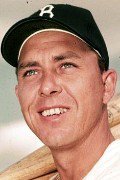
LA jumped-on Wynn for 4 runs in the 3rd inning. He was replaced by Turk Lown, and then Billy Pierce came on in the 4th. Craig shut the Sox down until the top of the 7th inning. A 3-run homer by Sherm Lollar was the big blow. He was relieved by Sherry for the 8th. Gerry Staley came in to relieve Pierce in the bottom of the 8th. Leading off the 8th, Hodges hit a home run to left-center field for the lead. Sherry shut down the Sox in the 9th for the 5-4 win. Game 5 was a pitcher’s duel, Koufax vs Bob Shaw. Koufax went 7 innings allowing 5 hits, a walk and just 1 run. He struck out 8. The run scored when Lollar hit into a double play. 3 Sox pitchers combined to scatter 9 Dodger hits over the 9 innings. Pierce and Dick Donovan followed Shaw. One of the hits was a triple by Hodges off of Shaw, but LA could not score him. Over the 3 games played at the Coliseum, LA drew 92,394, 92,650 and 92,706, for a 3-game total of 277,750. All MLB records. 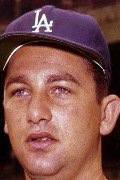
Every game except game 1 had been close contests. Game 6 was played in Chicago on October 8th. Podres against Wynn. LA jumped-on Wynn, who was starting on 2 days’ rest, for 2 runs on a walk and then Duke Sniders’ 2-run homer. It was Duke’s 11th in World Series play, and his last. The Dodgers put the game away with a 6-run 4th. The scoring was capped by a 2-run homer by Moon, making it 8-0 LA. The Sox chased Podres with a 3-run bottom of the 4th, but Sherry came in and slammed the door for the rest of the game. The Dodgers added a 9th run on a PH homer by Chuck Essegian in the top of the 9th. Sherry was named the MVP of the series. Both teams hit .261 for the series but LA outhomered Chicago 7-4. Hodges and Neal were the hitting stars.
1963 World Series
It would be four years before they returned to the series. There were new stars on the team and since the NL expanded in 1962, the league now had 10 teams with Houston and New York joining the league. They had come close to winning the 62 pennant but lost a 3-game playoff to the Giants. The 63 Dodgers were built on pitching. They did however have the 1963 batting champion in Tommy Davis, .326. His second in a row, and the last one by a Dodger in a full season. Trea Turner won in 2021, but he spent more than half the year with the Nationals.
Maury Wills had been the MVP in 62, and Drysdale was the Cy Young in 62. Sandy Koufax was the undeniable Ace of the team. He won his first Cy Young, and the NL MVP award. He led the league in ERA for the second time. He won 25 games and struck out 306 batters. Drysdale won 19, Podres 14, and Bob Miller 10. Ron Perranoski won 16 pitching out of the pen and saved 21. As a team they hit just 110 homers, paced by Howard’s 28. Fairly 12, and Davis 16, were the only other players in double figures. Wills’ 40 steals led the NL. 
They won 99 games and finished 6 games in front of the St. Louis Cardinals. They would face the AL Champion Yankees for the eighth time. Game one was at Yankee Stadium. Koufax vs Whitey Ford. The Dodgers jumped on Ford for 4 runs in the top of the second and never looked back. John Roseboro had a 2-run homer, and Bill Skowron, traded to LA for Stan Williams after the 62 season, had a 2-run single. Roseboro drove in another run in the 5th that ended the Dodgers scoring. Meanwhile Koufax kept mowing down the Yankees piling up strikeouts.
Tom Tresh finally tagged him for a 2-run homer in the 8th. But that was all the Yankees got as Koufax threw a complete game, striking out 15 and setting a new World Series record. He got 9 of those K’s off of the top of the Yankees lineup, Kubek, Richardson, Tresh and Mantle. Game two featured two lefties, Podres for the Dodgers and Al Downing for the Yankees. The Dodgers struck for 2 in the first inning. Wills and Gilliam singled, and both scored on a double by Willie Davis. 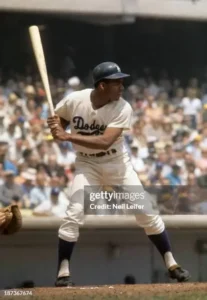
Skowron homered in the 4th for LA’s 3rd run. Podres kept the Yankees off of the board and LA scored its 4th run in the top of the 8th when Willie Davis doubled and was tripled home by Tommy Davis, his second triple of the game for a 4-0 lead. Podres got in a jam in the bottom of the 9th and was relieved by Perranoski. Hector Lopez had doubled, and then scored on a Elston Howard single. Perry came in and after giving up one hit, slammed the door for a 4-1 Dodger win. 
The teams went back to LA for game 3. Drysdale facing Jim Bouton. This would be a classic pitcher duel. In the Dodger half of the 1st, Jim Gilliam walked and with 2 outs, Tommy Davis singled him home. That was it. Drysdale tossed a 3-hit gem. He walked 1 and struck out 9. Bouton gave up just 4 hits and walked 5. LA now led the series 3-0. Game 4 would have Koufax facing Ford again. 
October 6th, 1963. 55,912 showed up for game 4. Koufax was on normal rest. Both pitchers were at their best through the first four innings. Koufax retired the Yanks in the 5th and LA came to bat. Frank Howard led off the inning and hit a mammoth homer down the left field line that went into the loge level. Mickey Mantle hit his only homer of the series off of Koufax to tie it in the 7th. In the bottom of the 7th, Gilliam hit a high chopper to third. Clete Boyer leaped and caught the ball and fired to first. But Joe Pepitone lost the ball in the white shirted background. It caromed off of his arm and rolled down the right field line. Gilliam went all the way to third base. 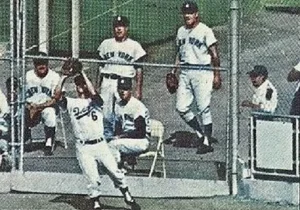
Koufax shut down the Yankees the rest of the way for the 2-1 win, and the Championship. So far, it is the only Championship the Dodgers have clinched at home. LA managed just 2 hits off of Ford. The Yankees had 4. Koufax struck out 10 for a 2-game total of 25. LA hit just .214 for the series, but the Yankees hit just .171. Only 5 players who had played for Brooklyn were still on the roster for this series. Duke Snider had been sold to the Mets prior to the season. Koufax was the MVP of the series.
1965 World Series
The Dodgers were not a very good team in 1964. The offense fell off of a cliff; they hit just 75 homers. Howard led the team with 24. Between Howard, T. Davis, Fairly and Willie Davis, they hit 58 of those. They batted .250 as a team and scored just 614 runs. The pitching was not much better. Drysdale and Koufax won 18 and 19 respectively, but they lost Koufax in August, probably would not have made a difference anyway as the team finished 80-82-2 in sixth place. It was in August that Koufax was diagnosed with traumatic arthritis.
There were some roster changes for the 65 season. Frank Howard and three other players were traded to the Senators for LHP Claude Osteen and SS John Kennedy. Tommy Davis went down with a severe ankle injury in May, and was replaced by journeyman outfielder, Lou Johnson. Jim Gilliam had retired to the coaching box, but mediocre play by the replacements caused the Dodgers to activate him and he played in 111 games. Eventual Rookie of the Year, Jim Lefebvre took over as the regular second baseman. Slick fielding Wes Parker was the full time first baseman in his second season, that move Ron Fairly to right. Like the 64 team, they had little power. Lefebvre and Johnson hit 12 each. Willie Davis was the only other player in double figures with 10.
The starters were Koufax, Drysdale, Osteen, and Podres. Big D and Sandy won 23 and 26 games respectively. Osteen added 15. Podres who battled some injuries won7. Perranoski had 18 saves as the primary closer. The highlight of the year was Koufax’s perfect game against the Cubs on September 9th. They nosed out the Giants by 2 games. Part of the reason was the suspension of Giants Ace, Juan Marichal for a brutal attack with a bat against Johnny Roseboro. They would face the transplanted original Washington Senators, now the Minnesota Twins. The Twins had plenty of power led by Harmon Killebrew, Bob Allison and Don Mincher.
They had four players with 20 or more, Hall, Allison, Killebrew and Mincher. Zoilo Versailles the SS had 19 and Tony Oliva added 16. Oliva also led the AL in batting. Their pitching was solid with 21 game winner, Mudcat Grant. He was joined by Jim Kaat 18, and Jim Perry 11, Gaylord’s brother, with Camilo Pasqual as the #4. Al Worthington was the closer and had 10 wins and 21 saves out of the pen.
The series began at Metropolitan Stadium in Minneapolis on Wednesday, October 6th. Dysdale faced Grant. Two 20 game winners facing off. Drysdale was starting because Koufax had refused to pitch on Yom Kippur, the Jewish High Holy Day. LA struck first on a Fairly homer in the second inning. Mincher tied the game for the Twins in the bottom of the 2nd with a solo shot. After that, it was all Twins. They scored 6 off of Big D in the 3rd, the big blow a 3-run shot by Versailles. They would score another in the 6th inning. LA did not score again until the 9th when Wils singled in Lefebvre. Grant became the first black pitcher to win a World Series game in AL history.
Game two featured Koufax against Jim Kaat. There had been a heavy rainstorm in Minneapolis overnight and the field was sloppy. Both pitchers put up zeros through five innings. Kaat shut down the Dodgers in the 6th. In the bottom of the 6th, an error by Gilliam opened the door. Versailles then scored when Oliva doubled, Oliva scored when Killebrew singled. Roseboro singled home LA’s only run in the top of the 7th. The Twins got it back on an unearned run in the bottom of the inning. They then scored 2 more in the 8th when Kaat doubled. The final was 5-1. Koufax went 6 and got the loss. He struck out 9. Perranoski gave up 3 of the 5 runs. The teams headed back to LA for the next 3 games. 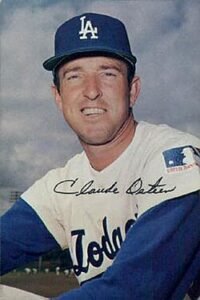
Game 3 pitted Claude Osteen against Camilo Pasqual. Both pitchers shut down the other through the 3rd. Osteen got the Twins out in the 4th. LA got on the board when Roseboro hit a 2-run single. Jim Lefebvre was injured scoring and would miss the rest of the series. LA scored single runs in the 5th and 6th. Osteen pitched a complete game 5-hit shutout. A big play came in the first inning when Versailles was caught stealing home. LA also made its 5th error of the series. 

Game 4 saw Drysdale and Grant hook up again. This time, Big D was much better. The Dodgers would score once in the 1st and again in the 2nd without hitting a ball out of the infield. Wills hit a grounder and collided with Frank Quillici at first when Grant failed to cover first. The play caused Wills to cartwheel. He promptly stole second. He went to third on an infield single by Willie Davis and scored when Fairly beat out a double play grounder. In the bottom of the second, Parker bunted for a single. He stole second and went to third when Grant’s throw went wild. He then scored when Roseboro’s grounder got past Quillici.
Parker homered in the 4th for their 3rd run. The Twins got a homer by Killebrew in the 4th and another by Oliva in the 6th to make it 3-2. In the bottom of the 6th, LA pushed across 3 runs, 2 of them knocked in on a Fairly single scoring Gilliam and Davis. Johnson homered in the 8th and LA won, 7-2. Drysdale had a complete game allowing 5 hits, 2 walks and striking out 11. Game 5 had Koufax against Kaat again. This time Sandy was dominant. LA scored in the first when Wills doubled and Gilliam singled him in. Davis then bunted and Killebrew’s throw was high enabling Davis to go all the way to third, scoring Gilliam. 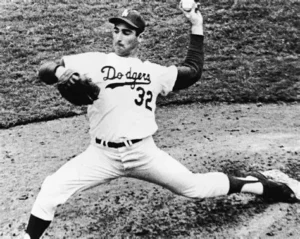

Koufax would pitch a 4-hit complete game shutout. He struck out 10 and walked just 1. Kaat lasted just 2.1 innings allowing 6 hits, 4 runs and striking out 1. LA scored 1 more run off of Dave Boswell then added 2 off of Jim Perry for the 7-0 win. Koufax aided his efforts with an RBI single in the 7th. Wills was the hitting star with 4 hits, including 2 doubles. LA stole 4 bases in the game. They headed back to Minnesota with a 3-2 series lead.
Claude Osteen got the start in game 6. Mudcat Grant, pitching on 2-days rest went for the Twins. Osteen ran into trouble in the bottom of the 4th. Earl Battey reached base on an error by 2B Dick Tracewski. Bob Allison then crushed a 2-run homer. Osteen was removed after the 5th and replaced by Howie Reed. Reed gave up a 3-run homer to Grant in the 6th capping the scoring for the Twins. The only Dodger run came on Ron Fairly’s second homer of the series in the 7th, and the series was tied.
Game 7 was supposed to be Don Drysdale’s to pitch. But Walt Alston decided to go with Koufax on 2-days rest and have Big D in the pen in case he was needed. Koufax escaped a couple of early jams, including 2 walks in the first. There was then an unusual play in the 3rd when Versailles appeared to have stolen second, only to be sent back to first when Joe Nossek was called for interference. Koufax was having trouble landing his curve, so he basically went with just his fastball and still baffled the hard-hitting Twins. Lou Johnson went to Koufax prior to the Dodgers hitting in the 4th and told him he would get him all of the runs he needed. 
Johnson led off the inning with a home run off of the foul pole, his second of the series. Fairly then doubled and scored on a single by Parker. Koufax got in trouble again in the 5th when the Twins had runners on 1st and 2nd with 1 out. Versailles hit a screamer down the third base line. Gilliam made a diving backhanded stop and stepped on 3rd for the force. Koufax then bore down and got the third out. 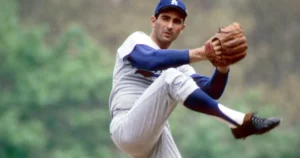
Koufax pitched a 3-hit shutout, walking 3 and striking out 10. LA won its 3rd World Series in Los Angeles. Koufax was named the series MVP. At the time, no one knew it would be just one more year for Sandy. After LA lost the 66 Series to the Orioles, Koufax retired from the game at age 30 due to the arthritis in his left arm. He went out on top with his 3rd Cy Young award and a 27-win season. He was elected to the Hall of Fame in 1972 getting 344 votes out of 396. LA retired his #32. The next segment will cover the wins in the 80’s and the wins we have been lucky enough to see over the last few years.
Born June 14th, 1948, in Los Angeles California. AKA The Bear

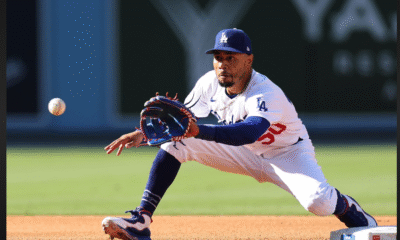

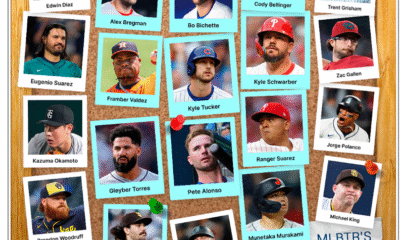

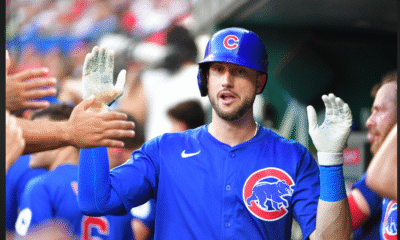

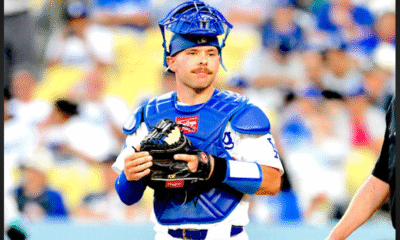





That was fun Bear. Can’t wait for the next episode!
Thanks Cassidy, working on it.
Great stuff Bear, as usual from you. Now I am hoping for a 3-peat and catching or passing the Cardinals number of WS championships in the next 5 years. Go Dodgers.
Appreciate the kudos.
Honestly, with the repeat and 3 in 6 years, we’ve now matched SF. Now it’s time to pass them.
8 years left on Shohei’s deal, over/under should 2.5, greedily stated.
Giants won 3 in 5 seasons. 10-12-14. 4 in 7 sounds better.
First step might be signing a free agent this off-season and/or moving Smith to 3rd 😀
Glad you put that smiley face up there Fred. Smith ain’t moving anytime soon.
According to MLBTR, Dodgers showing some interest in Raisel Iglesias.
Good. Sign him and Bader. Then trade Teo.
Trading Teo is obviously an option for us fans. We have no clue how the powers that be think about that. He is really no better than a DH now. His defense is porous.
Any idea about which teams need a DH??
Red Sox for sure. Joc Pederson was the DH in Texas and he was horrid. But he exercised his player option and will be back. There are a few teams who might be interested besides Boston. But they tried really hard to sign him when he was a free agent.
Great stroll down memory lane, Bear. Thank you.
I rode my bike over to Camelback Ranch yesterday to catch the final regular season Fall Ball game only to see it was cancelled. Due to the potential of bad weather blowing into the Valley of the Sun this weekend, they moved all the playoff games forward a day. They started the playoffs yesterday and today at Salt River. The finals are now Friday at Salt River.
I know there are college football fans here. I follow college athletics closely especially as it pertains to NIL and transfer portal issues.
If you don’t share my interest, please stop reading now, as my comments won’t be interesting.
NIL is providing millions to college athletes, especially football and basketball players but can provide for baseball players. This includes no 11.7 scholarship limits for college baseball teams, anymore.
I have no real issue with players getting paid now, at least a “reasonable” amount but I don’t think it’s sustainable with the current money being spent and NO rules..
And despite recent attempts to put some guidelines in place, there seems to be so many new schemes to use NIL for recruitment that I never heard of before.
I am an alumni of a high school with strong athletics. This year’s hoops team is highly rated pre-season. I have a very close friend, also a coach and alumni, with a contact with a prominent college hoops program. My alma mater has a 6’8” senior to be player who’s getting recruited. He’s a ONE star player, at best, right now but shows potential. He verbally committed early to a state college but he flipped on that to go to another lower level in-state college. His Basketball NIL deal with that school will start in September, after his senior year in high school. It will pay him $50K and $3K per month, and a car.
That seems pretty normal. Here’s where it gets weird.
If he progresses as expected at this in-state school, the plan is for him to play 2 years and the lower state college and then transfer to a higher status, more name brand college. Again not that strange.
Here’s where it gets weird – That more name brand college is going to pay a percentage of his NIL money to the college he will attend for a couple of years. So two college are in cahoots to supply his NIL money as the kid is planning to move from a minor league hoops team to a more major one. The more prominent program is funding a developmental program at another college and paying 50% of the NIL money.
I have NEVER thought or heard of this before.
Damn, are there no rules in this whole business? And it makes me wonder if this is common in football? Does a USC quietly pick up a portion of NIL money for a kid to attend Cal Poly or Northern Arizona to develop and then move up to USC after a year or two?
I just find all this shit so wrong.
Thanks Phil. College football is just a factory for the NFL now.
Some clarity on what happened with Rortvedt. Prior to being placed on waivers, the Dodgers and Rortvedt agreed to a 1-year 1.25-million-dollar deal avoiding arbitration. The hope was that he would clear waivers, but the Reds put the kibosh on that. They obviously saw something they liked when he was with the Dodgers.
Foolish of the Dodgers
Most likely since it forces them to keep Rushing as the backup, unless they decide to go with one of their AAA guys or sign a backup this winter.
Before Rortvedt was DFA’d, he signed a one year $1.25MM MLB deal. With that price tag attached, the Dodgers believed he would clear waivers and be outrighted. I am sure that Rortvedt already accepted a possible outright to return to OKC from LAD. Cincinnati changed those plans.
I know I am in the minority here, but I would not trade Teo. I would keep him and move him back to left field. His bat has always played huge in October.
I am not convinced he ever completely healed from the groin strain. He got off to such a great start, but may have come back too early and got into some horrible habits. I am not ready to give up on him, but if the Dodgers could flip him for something more of a need. why not. If he returns to LAD in 2026, I am okay.
Actually Scott, he was hot against the Reds, then cooled off against the Phillies except for that clutch 3-run game winning homer. He did not hit well against the Brewers, and he basically disappeared in the World Series. He struck out 11 times total in the Phillies and Brewers series; he struck out 10 times in the World Series. He also disappeared against the Mets last year but was good against the Padres and Yankees.
Not exactly huge. .769 OPS IN 24 playoffs and .788 OPs in 25.
Don’t forget the 5 HRs and 13 RBIs, this post season, those kind of productive numbers should trump OPS, or at least offset them somewhat.
Teo had 3 HRs and 12 RBIs in the 2024 playoffs. I know he didn’t get on base as much as we’d like but I think he deserves a little slack. 25 RBIs over two post seasons are nothing to sneeze at.
I’m for trading him and getting younger. But I also acknowledge that gigantic 3 run HR at Philly in game 1 which totally turned the game around and shut those idiot fans up.
However, he did swing at absolute horrible pitches throughout the rest of the postseason and was not nearly as clutch as he was last October.
His defense was also really bad all year, including October.
Teo is owed, with a buyout in a couple of years, close to $50M. He put up 1.5 WAR in this, his age 32 season. Is he worth it going forward? In my opinion the Dodgers need more, much more out of their corner outfielders. I believe this will be addressed in the off season.
Thanks for another history lesson Bear. I see you’re doing the same thing over at DT. Must keep you busy. I know winters are long in Colorado. I’m sure researching history for two sites will keep you warm until Spring. Winters have become tougher for me as I’ve aged. Even in SoCal where winters aren’t severe it’s still uncomfortable. Winters. Nope.
Thanks Badger. Mark is scaling back his participation, and I said I would post now and then. It keeps my mind sharp since I damn sure am not getting any younger. I enjoy the research immensely. Yep, it does get a wee but chilly here in the winter. Canon City usually has milder winters than they do up in Denver. But a few years ago, we had a couple of -10-degree days in February. But I can tell you it was not as cold as it was when I spent the winter of 67 in Korea. Germany was no hot spot either.
May we start calling you Codger?
You may Fred, as it takes one to know one.
Teo for McNeil lol
Bear excellent as always. thanks for the smiles😎
Your welcome Sandy.